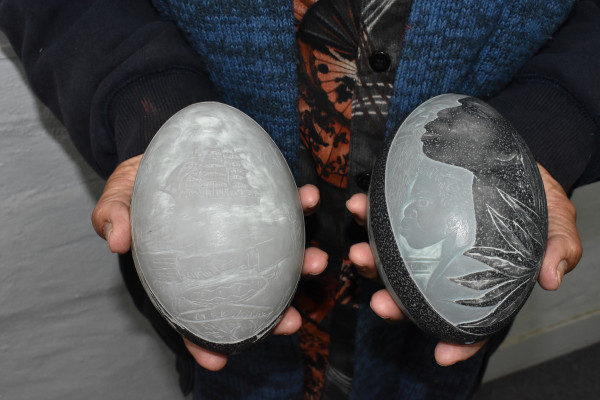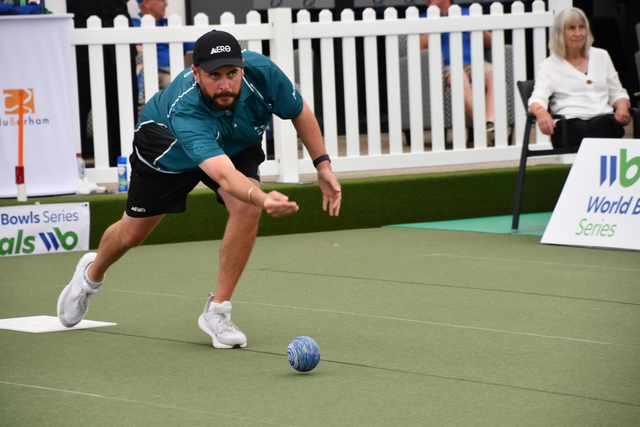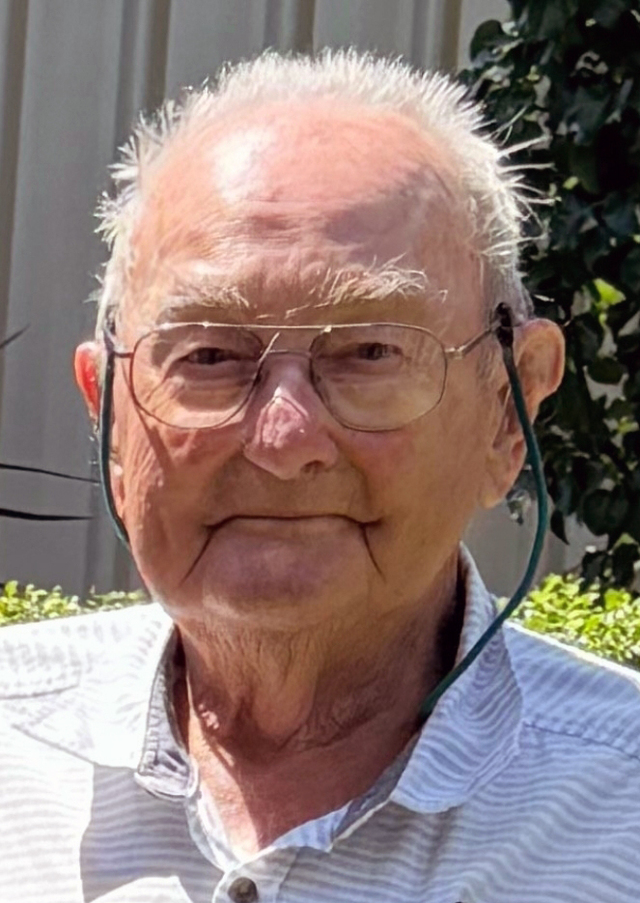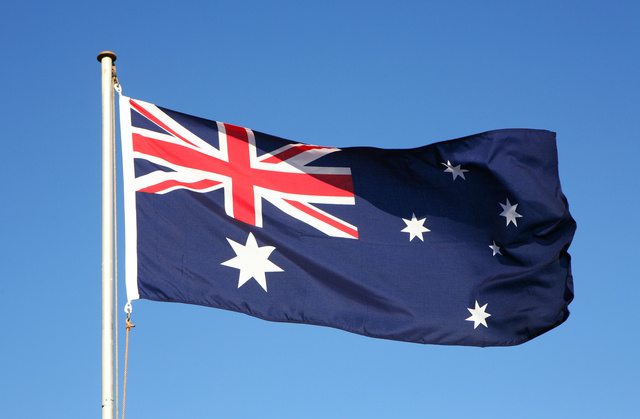THE masterful work of Esther Kirby was revealed in a Museums Victoria video last week.
As part of its Unboxing the Museum series showcasing items chosen from their vast collection, staff presented one of the local artist’s intricately carved emu eggshells.
“We’re very privileged to have some of Aunty Esther’s emu eggs,” South Eastern Aboriginal Collections curator Kimberley Moulton said in the video.
“What’s so remarkable about her eggs is that she can get up to 15 layers of colour.
“She scratches away the colour of the emu egg to get up to 15 different shades and creates these incredible images.”
In Kerang last week Aunty Esther said it was possible to get up to 17 shades of colour.
“It depends how far you want to go,” she said.
“I’ve put a hole in it before.”
The local artist said she learnt to carve by watching her father ‘Sam’ Kirby at work.
A Wiradjuri man who was brought up at Warangesda mission south of Griffith, he had learnt from another man at Warangesda, Uncle Joe Walsh.
“Uncle Joe is the one who picked it up first, probably up around Griffith somewhere,” Aunty Esther said.
“He was the real master.”
“But the old fellas never got paid the proper value of the eggs.
“Everyone was doing it hard then and they had to think of ways to feed their kids.”
Aunty Esther herself initially took up a pen knife for practical reasons when her father died in 1977.
“He had two eggs half-finished and the blokes had already paid for them, so I said ‘I’ll finish them off. Can’t have Dad getting a bad name’.”
Though the eggs were already paid for, both buyers gave her some money for finishing them.
“I ended up with 100 bucks in my pocket, so then I tried a couple of my own,” she said.
Since then Aunty Esther reckons she has probably carved over 1000 eggs, with many ending up in collections around the world.
“I’ve been invited to France, Russia, America and South Africa, but I didn’t go at the time because I couldn’t take my kids,” she said.
While her father’s generation used pen knives, or broken glass or mussel shells to carve the thick shells, Aunty Esther has a tool kit of files and sharp craft blades.
The local elder, who also makes possum skin cloaks and does other design work, says the carvings vary a lot.
“There’s some you can do really quick and other ones take longer.”
“Sometimes a story or a picture will come into my head and I might take two or three days to a week to carve it.”
Despite a deep respect for the work of her father’s generation of carvers, it was only due to an act of kindness that she came to have one of her dad’s eggs.
A collector she met in Mildura who owned several sent her one in the mail after he heard she didn’t have one.
The egg, featuring an intricately rendered tall ship, is very precious to her.







